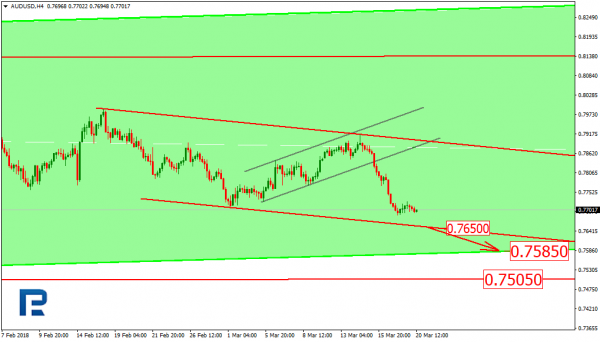The AUD is again going down against the US dollar after taking a short break. The Aussie was unable to get stabilized even after the RBA meeting minutes were released today. The EUR/USD bounce did not make any substantial difference either. It looks like the sentiment towards the Aussie is hitting its lows, which may well send the currency to the bottom it reached before in March.
The RBA minutes say the Australian economy is doing good, with the growth likely to exceed the average expectations. The inflation, meanwhile, may surpass 2%, although low interest rates act as a slowing-down effect for the CPI. The minutes also state that too strong Aussie is negatively influencing both the GDP and the inflation. This is not the first time the RBA points that out, and while the Aussie had previously been resistant to that, this time it did show some negative reaction.
Another thing the RBA minutes say is that the job market is on its positive way, and this may act as a good support for the economy. Average wages are growing, and in far more sectors and industries than before.
The weak point of the Australian economy is still the household spending; this is an old and known issue, and it can be resolved only by drastically raising the level of wellbeing in the country, so that large one-time spending may no longer be a problem for people. Currently, this is not the case, and the household spending remains a slowing-down factor for Australia.
As a rule, the Aussie shows little reaction to RBA minutes and hawkish tone, but this time there were no other important info or stats on the table, and the AUD had to respond to the minutes, which put it under heavy pressure.
To understand what is going on with AUD/USD, technically, one has to determine multiple trend tiers here. The first tier covers the movement occurring over the last year; here, the trend is overall ascending, while the last high was just 10 or 12 pips bigger than the previous one, which may signal that the momentum is fading out. Meanwhile, both mid term and short term trends are descending, with the latter approaching the channel support at 0.7650. In case this one gets broken out, the price may head even further down, i.e. to the major ascending channel support at 0.7585. Again, if this one is broken out, the price may start testing the range within 0.7500 and 0.7505. This is actually the area where most demand is concentrated, so the way the market will react to the price moving towards this are will determine the further AUD movement for the following one or two years.















